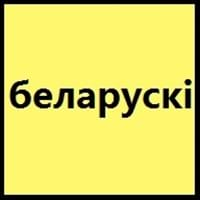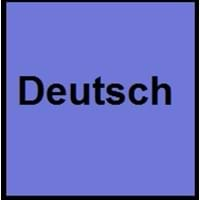Countries
Belarus, Poland
Austria, Belgium, Germany, Italy, Liechtenstein, Luxembourg, Switzerland
National Language
Belarus, Gambia
Germany
Second Language
Poland
North Dakota, United States of America
Speaking Continents
Asia
Europe
Minority Language
Czech Republic, Lithuania, Ukraine
Czech Republic, Denmark, Former Soviet Union, France, Hungary, Italy, Namibia, Poland, Romania, Slovakia, Slovenia
Regulated By
National Academy of Sciences of Belarus, National Languages Committee
Council for German Orthography
Interesting Facts
- Since 1918, Belarusian has been the official language of Belarus.
- Belarusian include many loanwords from Polish language.
- One of the large group of Indo-Germanic languages is German.
- The second most popular Germanic language spoken today behind English is German language.
Similar To
Russian and Ukrainian
Dutch, Danish, Norwegian, Swedish and English Languages
Derived From
Not Available
Albanian Languages
Alphabets in
Belarusian-Alphabets.jpg#200
German-Alphabets.jpg#200
Writing Direction
Not Available
Left-To-Right, Horizontal
Language Levels
Not Available
Time Taken to Learn
Not Available
How Are You?
Jak vy ?
Wie geht es dir?
Good Night
Dabranač
gute Nacht
Good Evening
Dobry viečar
guten Abend
Good Afternoon
dobry dzień
guten Tag
Good Morning
Dobraj ranicy
guten Morgen
Sorry
Vybačajcie
Verzeihung
I Love You
JA liubliu ciabie
Ich liebe dich
Excuse Me
Vybačajcie
Entschuldigung
Dialect 1
North-Eastern Belarusian
Swiss German
Where They Speak
North-East Belarus
Switzerland
How Many People Speak
Not Available
Dialect 2
South-Western Belarusian
Swabian German
Where They Speak
South-West Belarus
Germany
How Many People Speak
Not Available
Dialect 3
Middle Belarusian
Texas German
Where They Speak
Middle Belarus
Texas
How Many People Speak
Not Available
Native Name
Беларуская мова (Bielaruskaja mova)
Deutsch
Alternative Names
Belarusan, Belorussian, Bielorussian, Byelorussian, White Russian, White Ruthenian
Deutsch, Tedesco
French Name
biélorusse
allemand
German Name
Weißrussisch
Deutsch
Pronunciation
Not Available
[ˈdɔʏtʃ]
Ethnicity
Belarusians
Germans
Origin
18th century
6th Century AD
Language Family
Indo-European Family
Indo-European Family
Early Forms
Old East Slavic
No early forms
Standard Forms
Belarusian
German Standard German, Swiss Standard German and Austrian Standard German
Signed Forms
Not Available
Signed German
Scope
Individual
Individual
ISO 639 6
Not Available
deus
Glottocode
bela1254
high1287, uppe1397
Linguasphere
53-AAA-eb < 53-AAA-e (varieties: 53-AAA-eba to 53-AAA-ebg)
52-ACB–dl & -dm
Language Type
Living
Living
Language Linguistic Typology
Not Available
Subject-Object-Verb, Subject-Verb-Object
Language Morphological Typology
Not Available
Fusional, Synthetic
All Belarusian and German Dialects
Most languages have dialects where each dialect differ from other dialect with respect to grammar and vocabulary. Here you will get to know all Belarusian and German dialects. Various dialects of Belarusian and German language differ in their pronunciations and words. Dialects of Belarusian are spoken in different Belarusian Speaking Countries whereas German Dialects are spoken in different German speaking countries. Also the number of people speaking Belarusian vs German Dialects varies from few thousands to many millions. Some of the Belarusian dialects include: North-Eastern Belarusian, South-Western Belarusian. German dialects include: Swiss German , Swabian German. Also learn about dialects in South American Languages and North American Languages.
Belarusian and German Speaking population
Belarusian and German speaking population is one of the factors based on which Belarusian and German languages can be compared. The total count of Belarusian and German Speaking population in percentage is also given. The percentage of people speaking Belarusian language is 0.11 % whereas the percentage of people speaking German language is 1.39 %. When we compare the speaking population of any two languages we get to know which of two languages is more popular. Find more details about how many people speak Belarusian and German on Belarusian vs German where you will get native speakers, speaking population in percentage and native names.
Belarusian and German Language Codes
Belarusian and German language codes are used in those applications where using language names are tedious. Belarusian and German Language Codes include all the international language codes, glottocodes and linguasphere.





